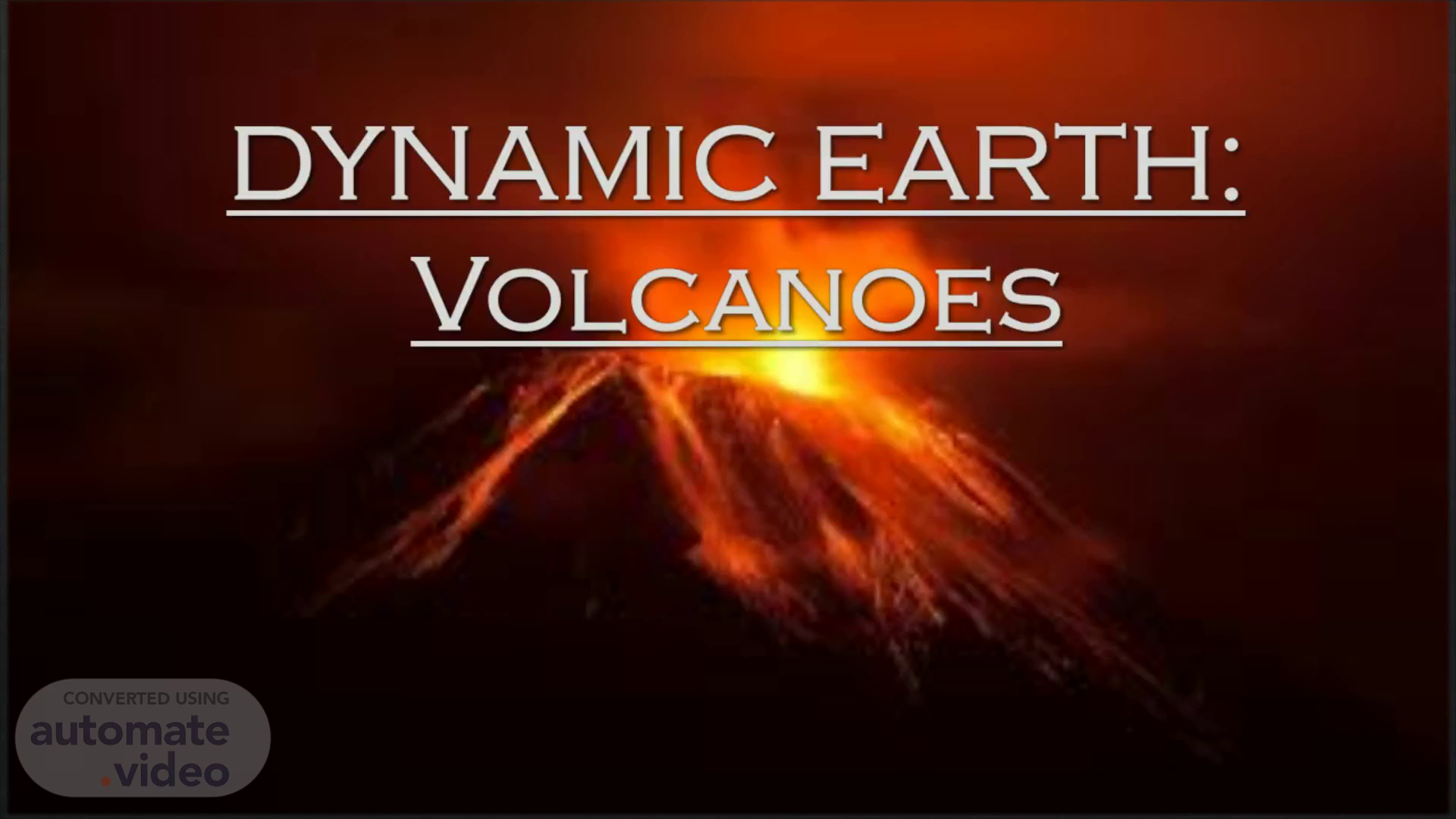
DYNAMIC EARTH: Volcanoes
Scene 1 (0s)
[Audio] Dynamic Earth: Volcanoes. DYNAMIC EARTH: Volcanoes.
Scene 2 (8s)
[Audio] The structure of the earth is divided into four main components: the crust, mantle, outer core, and inner core. Each layer has a distinct chemical composition and physical state and can impact life on the Earth's surface..
Scene 3 (26s)
[Audio] The crust is on the outside, while the mantle is in the middle and the core is the innermost section. Tectonic plates rip apart at a divergent plate boundary, causing volcanic activity and shallow earthquakes. At a convergent plate boundary, one plate dives or subducts beneath the other, resulting in a variety of earthquakes and a line of volcanoes on the overriding plate..
Scene 4 (52s)
[Audio] On Earth, volcanoes form when one tectonic plate moves beneath another. Normally, a thin, heavy oceanic plate would submerge or move under a thicker continental plate. When this happens, the oceanic plate sinks into the mantle..
Scene 5 (1m 10s)
[Audio] Volcanoes are an opening in the Earth's crust that releases ash, gasses and steam, and hot liquid rock called lava. When the lava cools and hardens, it forms into the cone-shaped mountain we think of as a volcano. Most of the world's volcanoes are found around the edges of tectonic plates, both on land and in the oceans..
Scene 6 (1m 34s)
[Audio] Pompeii. Eruption of Mount Vesuvius ‘Pompeii’.
Scene 7 (1m 40s)
[Audio] Of the many eruptions of Mount Vesuvius, a stratovolcano in southern Italy, the most famous being the eruption in 79 AD, which was one of the bloodiest eruptions in European history. Very few people living in small towns very close to the mountain survived the eruption, but the vast majority did not and they were burned to death, freezing into statues of solid rock..
Scene 8 (2m 5s)
[Audio] Its creation and eruption were caused by the African and Eurasian plates colliding: more specifically, the African plate sank below the Eurasian plate and generated what is called a " Convergent boundary." Under Mount Vesuvius, scientists have detected a tear in the African plate. This " slab window" allows heat from the Earth's mantle layer to melt the rock of the African plate, building up pressure that causes violent explosive eruptions..
Scene 9 (2m 36s)
[Audio] The day had started like any other in the ancient Roman city of Pompeii. Shops were open, markets were busy and citizens were gathering in the forum to discuss politics and business. Investment money had led to great renovation works across the city, which had now grown quite big. The future looked bright for the Roman city.
Scene 10 (3m 0s)
[Audio] Never in their darkest nightmares could any of the 15,000 citizens of Pompeii predict the cruel fate that would inevitably come to their front doors. Situated in the Bay of Naples in the Campania region of Italy, the people of this region lived in the shadow of a sleeping giant, Mount Vesuvius..
Scene 11 (3m 20s)
[Audio] The Romans knew it was a volcano but they were completely ignorant to the extent of its destructive power. They also fatally believed it was extinct. The catastrophic events of 24th of August, 79 AD would demonstrate how wrong that belief was..
Scene 12 (3m 40s)
[Audio] For four days before that fateful event, the surrounding populations had felt small earthquakes, which had increased in frequency as the days went on. The warning signs were there but the Romans in this region had become accustomed to such seismic activity. The eruption lasted 18 hours, Pompeii was buried under 18 feet of ash and pumice, not to be restored.